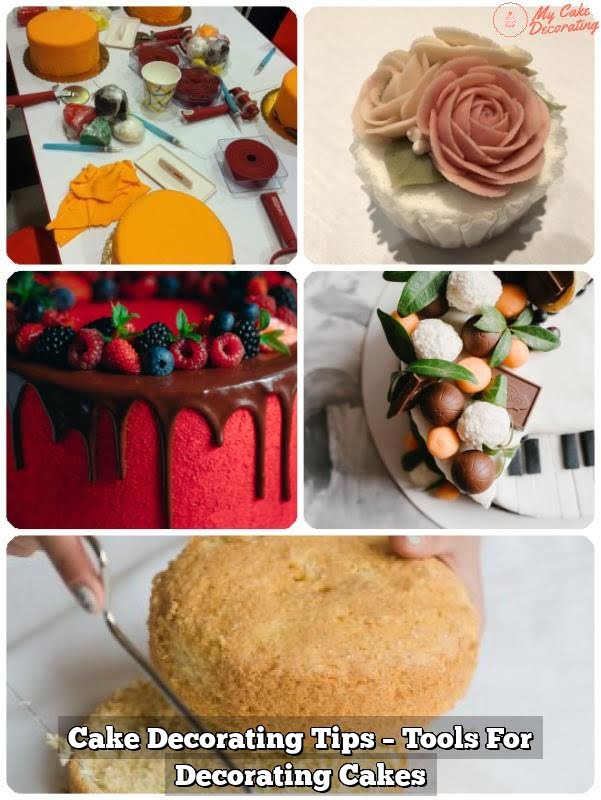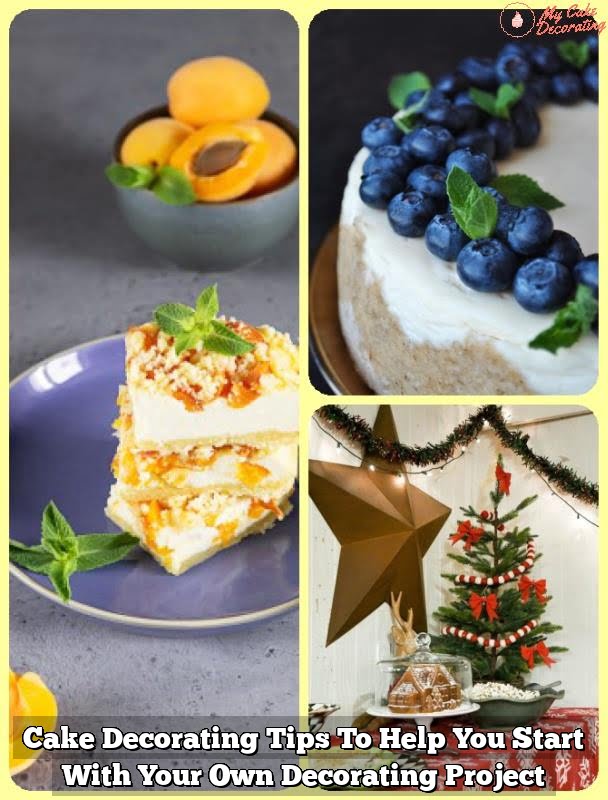Bas relief cake decorating is an art form that adds a touch of elegance and sophistication to any cake. In this guide, we will explore how to do bas relief cake decorating, a technique that involves creating three-dimensional designs on the surface of a cake. By following the steps outlined in this article, you can learn how to master this intricate form of cake decoration and impress your guests with stunning designs.
Bas relief cake decorating has a rich history that dates back centuries, with origins in classical sculpture and architecture. This technique allows decorators to create intricate patterns, textures, and designs that appear to be slightly raised from the surface of the cake. By understanding the history behind bas relief cake decorating, you can appreciate the beauty and artistry that goes into each creation.
To embark on your bas relief cake decorating journey, you will need specific tools and materials to achieve the desired effects. From modeling chocolate to silicone molds, the right supplies are essential for creating stunning bas relief designs. In the following sections, we will discuss in detail the tools and materials needed for bas relief cake decorating, as well as provide a step-by-step guide on how to create these beautiful designs on cakes.
History of Bas Relief Cake Decorating
Bas relief cake decorating has a rich history that dates back centuries, originating from the art of creating three-dimensional sculptures. The term “bas relief” comes from the French word meaning “low relief,” where the design or sculpture projects slightly from the surface it is carved into. This technique was later adapted to cake decorating, allowing bakers and decorators to create stunning designs that give the illusion of depth and dimension on cakes.
One of the earliest examples of bas relief cake decorating can be traced back to ancient civilizations such as the Egyptians and Greeks, who used this technique in their architectural designs and sculptures. Over time, bas relief evolved into a popular art form during the Renaissance period, where it was prominently featured in architecture, paintings, and decorations.
Today, bas relief cake decorating has become a popular trend in the baking world, with decorators using various tools and techniques to bring intricate designs to life on cakes.
To truly appreciate the art of bas relief cake decorating, it is essential to understand its historical significance and evolution over time. By learning about the origins of this technique, aspiring decorators can gain a deeper appreciation for the craft and find inspiration for creating their own unique designs on cakes.
In the next section, we will delve into how to do bas relief cake decorating by providing step-by-step guidance on creating stunning designs that will impress any event or celebration.
| Key Point | Information |
|---|---|
| Origin of Bas Relief Cake Decorating | Dates back centuries with roots in ancient civilizations like Egypt and Greece. |
| Renaissance Period Influence | Bas relief became a popular art form during this time in architecture and decorations. |
| Modern Trend | Today, bas relief cake decorating is widely practiced in the baking world with innovative tools and techniques. |
Tools and Materials Needed for Bas Relief Cake Decorating
Bas relief cake decorating is a beautiful technique that adds dimension and elegance to any cake design. To achieve this stunning effect, you will need the right tools and materials. Here is a list of essential items you will need to master the art of bas relief cake decorating:
- Flexible silicone molds: These molds are key to creating intricate designs for your bas relief cakes. Look for molds with various patterns and textures to add depth to your designs.
- Fondant or gum paste: These pliable sugar pastes are essential for creating the raised elements in bas relief decorating. Fondant can be colored and shaped easily to bring your design to life.
- Rolling pin: A good quality rolling pin will help you roll out your fondant or gum paste evenly to the desired thickness for your bas relief design.
- Palette knife: This tool is useful for cutting, shaping, and lifting delicate pieces of fondant when creating bas relief decorations.
- Edible glue or water: These are essential for attaching fondant pieces together and securing them to the cake surface.
Now that we have covered the basic tools and materials needed, let’s dive into how to do bas relief cake decorating. Follow these steps carefully to create stunning designs that will impress your friends and family:
- Prepare your cake by smoothing out the surface with buttercream or ganache.
- Roll out your fondant or gum paste and press it into the silicone mold of your choice.
- Carefully remove the molded piece from the mold and apply edible glue or water to adhere it to the cake surface.
With these tools and materials in hand, you are ready to explore the creative possibilities of bas relief cake decorating. Experiment with different molds, colors, and textures to create unique designs that will elevate any celebration.
Selecting the Right Cake for Bas Relief Decorating
One important consideration when selecting a cake for bas relief decorating is the texture and density of the cake itself. A denser cake with a tighter crumb structure, such as a pound cake or butter cake, is ideal for bas relief designs as it provides a sturdy base for creating intricate raised designs. Light and fluffy cakes, like sponge cakes, may not hold up as well under the pressure of adding decorative elements.
Another factor to keep in mind when choosing a cake for bas relief decorating is the flavor profile. Since bas relief designs are often the focal point of the cake, it’s important to select a cake flavor that complements the overall design aesthetic. Rich flavors like chocolate or red velvet can enhance the visual impact of your bas relief design while lighter flavors like vanilla or lemon can provide a more subtle backdrop.
In addition to texture and flavor, the size and shape of the cake should also be taken into consideration when planning your bas relief design. Larger cakes with spacious surface areas provide more room to work with intricate designs, while smaller cakes may require simpler or smaller motifs. Ultimately, selecting the right cake for bas relief decorating involves balancing all these factors to create a harmonious and visually stunning finished product.
| Consideration | Impact |
|---|---|
| Texture and Density | Affect how well the design holds up |
| Flavor Profile | Enhances or complements the design aesthetic |
| Size and Shape | Determines complexity of design and motif selection |
Step-by-Step Guide on How to Create Bas Relief Designs on Cakes
Bas relief cake decorating is a unique and impressive technique that adds depth and dimension to your baked creations. By following a few simple steps, you can create stunning designs that will wow your friends and family. In this section, we will guide you through the process of how to do bas relief cake decorating.
Gather Your Tools and Materials
Before getting started with bas relief cake decorating, make sure you have all the necessary tools and materials on hand. You will need a sharp knife or modeling tool for carving, a rolling pin for flattening out fondant or gum paste, edible glue or water for adhering decorations, and of course, fondant or gum paste in various colors. Additionally, having some cornstarch or powdered sugar on hand to prevent sticking is also helpful.
Prepare Your Cake
Start by selecting the right type of cake for bas relief decorating. A smooth, flat surface works best to showcase the raised design. Once your cake is baked and cooled, level it off if necessary to ensure an even base for your decoration. You may also choose to crumb coat your cake with buttercream or ganache before applying the fondant or gum paste layer.
Create Your Bas Relief Design
To begin creating your bas relief design, roll out your fondant or gum paste to the desired thickness. Then, using a stencil or freehand drawing as a guide, carefully carve out the design into the rolled-out material. Take your time with this step to ensure precision and detail in your creation.
Once you are satisfied with the design, gently lift it onto your prepared cake and press it into place. Add any additional embellishments as needed to bring your design to life.
By following these steps and practicing patience and attention to detail, you can master the art of bas relief cake decorating and create show-stopping designs that will leave everyone amazed at your skills. Experiment with different techniques and designs to find what works best for you and let your creativity shine through in every sweet creation you make.
Tips and Tricks for Perfecting Bas Relief Cake Decorating
Bas relief cake decorating can be a stunning technique to add depth and dimension to your cakes. However, perfecting this art form requires patience, practice, and skill. In this section, we will explore some tips and tricks that can help you master the art of bas relief cake decorating.
Pay Attention to Detail
One of the key elements in achieving a beautiful bas relief design is paying attention to detail. Take your time when creating the design and make sure that each element is carefully crafted. Use tools such as sculpting tools or even toothpicks to create intricate details in your design.
Work in Layers
To create depth in your bas relief design, work in layers. Start with a base layer of fondant or gum paste on the cake, then gradually build up additional layers to create the desired effect. Pay attention to the placement of each layer to ensure a three-dimensional look.
Practice Makes Perfect
Like any other skill, practice is key to mastering bas relief cake decorating. Don’t be discouraged if your first attempts don’t turn out perfectly – keep practicing and refining your technique. Experiment with different designs and color combinations to enhance your skills and creativity.
By following these tips and tricks, you can improve your bas relief cake decorating skills and create stunning designs that will impress your friends and family. Remember to have patience and enjoy the process of experimenting with different techniques until you achieve the perfect bas relief design on your next cake masterpiece.
Examples of Stunning Bas Relief Cake Designs
Bas relief cake decorating is a stunning technique that can elevate any ordinary cake into a work of art. Whether you are a beginner or an experienced baker, incorporating bas relief designs on your cakes can add a touch of elegance and sophistication. To inspire you for your next baking project, here are some examples of stunning bas relief cake designs:
- Floral Bas Relief Design: Create a beautiful and delicate floral pattern on your cake using bas relief techniques. You can sculpt intricate petals, leaves, and vines to bring your cake to life.
- Geometric Bas Relief Pattern: Give your cake a modern and chic look by incorporating geometric shapes into your bas relief design. Experiment with lines, circles, squares, and triangles to create a unique pattern.
- Vintage-Inspired Bas Relief Cake: Embrace the classic beauty of vintage design by crafting ornate swirls, scrolls, and lace patterns on your cake. This timeless style adds a touch of nostalgia to any celebration.
These examples showcase the versatility and creativity that can be achieved through bas relief cake decorating. By mastering this technique, you can unleash your imagination and bring any design idea to life on a delicious canvas. Now that you have seen some inspiring examples, let’s delve into how to do bas relief cake decorating yourself.
- Start by selecting the right tools and materials for bas relief cake decorating, such as fondant or gum paste, sculpting tools, rolling pins, and edible coloring agents.
- Prepare your chosen cake base – whether it’s buttercream-covered or fondant-covered – and ensure it is smooth and ready for the bas relief design process.
- Follow a step-by-step guide on creating bas relief designs on cakes by carefully sculpting layers of fondant or gum paste onto the surface of the cake to achieve the desired depth and dimension.
With practice and patience, you can master the art of bas-relief cake decorating and create stunning designs that will impress your guests at any special occasion. Remember to have fun experimenting with different patterns, textures, and styles to truly make your cakes stand out in both taste and appearance.
Troubleshooting Common Issues in Bas Relief Cake Decorating
Even with the best tools, materials, and skills, sometimes issues can arise when attempting bas relief cake decorating. One common problem that many cake decorators encounter is the cracking or crumbling of the cake when creating raised designs.
This can be due to the type of cake used, overworking the fondant or gum paste, or not allowing enough time for the decorations to set properly. To avoid this issue, be sure to use a denser cake recipe that can hold up to the weight of the decorations, handle the fondant or gum paste gently to prevent overworking it, and allow enough time for each layer of decoration to dry before adding more.
Another common issue faced by those new to bas relief cake decorating is achieving a clean finish on their designs. Uneven edges, messy lines, or smudged details can detract from an otherwise beautiful creation. To address this problem, practice good technique by using sharp tools for clean cuts and precise detailing.
Additionally, take your time when working on intricate designs and don’t rush through the process. Remember that patience and attention to detail are key when it comes to achieving a polished look in bas relief cake decorating.
One final issue that may arise during bas relief cake decorating is color bleeding or fading on the decorations. This can happen if the colors used are not compatible with the type of fondant or gum paste being used, if too much moisture is introduced during the decorating process, or if improper storage techniques are employed.
To avoid this problem, be sure to use food-safe coloring agents specifically formulated for use in fondant or gum paste decorations, work in a dry environment free from excess humidity, and store finished cakes in a cool, dry place away from direct sunlight. By taking these precautions and following best practices for color application and preservation, you can ensure that your bas relief cake designs remain vibrant and eye-catching for longer periods of time.
Resources for Further Learning and Inspiration in Bas Relief Cake Decorating
In conclusion, bas relief cake decorating is a beautiful and intricate technique that can elevate your cake creations to new heights. By following the step-by-step guide provided in this article and utilizing the right tools and materials, you can create stunning designs that will impress your clients or guests. Remember to select the right cake for bas relief decorating, as different textures and flavors can enhance the overall look of your creation.
To further enhance your skills in bas relief cake decorating, there are various resources available for learning and inspiration. Online tutorials, classes, books, and workshops can provide valuable tips and techniques from experienced decorators. Additionally, observing examples of stunning bas relief cake designs can spark creativity and inspire you to push the boundaries of your own creations.
Incorporating bas relief techniques into your cake decorating repertoire can set you apart as a skilled and versatile decorator. With practice, patience, and dedication to honing your skills, you can master the art of bas relief cake decorating and create truly awe-inspiring confections that will be remembered for years to come.
Whether you are a seasoned professional or a beginner looking to expand your skillset, exploring the world of bas relief cake design can open up a world of creativity and innovation in your baking endeavors.
Frequently Asked Questions
What Is the BAS Relief Technique for Cake Decorating?
The BAS relief technique for cake decorating involves creating a three-dimensional design on the surface of a cake. It typically involves using different levels of frosting to create a raised effect, giving the illusion of depth and texture.
What Is the Bas Relief Effect on a Cake?
The bas relief effect on a cake refers to the raised design or pattern that is created using the BAS relief technique. This technique allows for intricate designs to be showcased on a cake’s surface, adding visual interest and artistry to the overall presentation.
What Are the 7 Different Cake Decorating Techniques?
There are seven different cake decorating techniques that bakers commonly use to enhance the appearance of their creations. These include frosting with a smooth finish, piping designs with royal icing or buttercream, creating fondant decorations, hand-painting details onto cakes, using stencils for intricate patterns, airbrushing colors onto cakes, and employing the bas relief technique for added dimension in decorating.
Each method offers unique possibilities for creativity and customization in cake design.

Welcome to my blog about home and family. This blog is a place where I will share my thoughts, ideas, and experiences related to these important topics. I am a stay-at-home mom with two young children. I hope you enjoy reading it! and may find some helpful tips and ideas that will make your home and family life even better!





